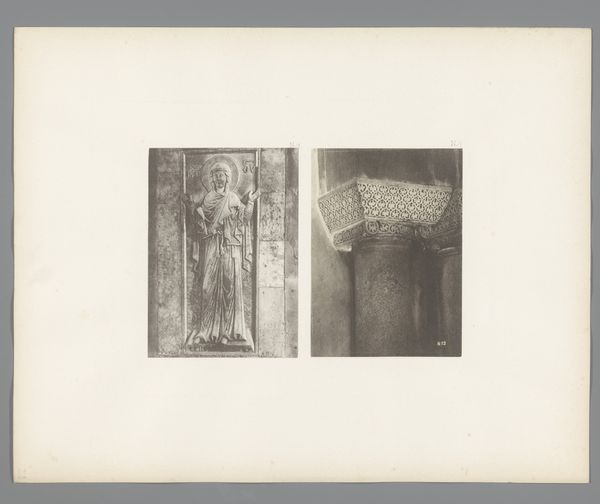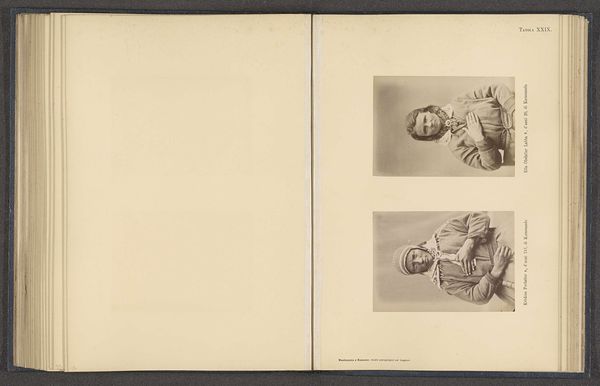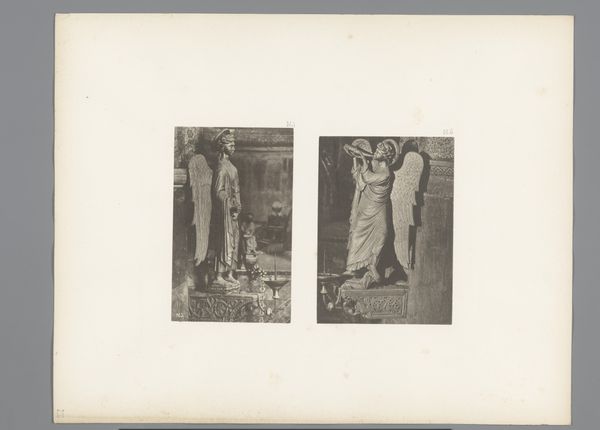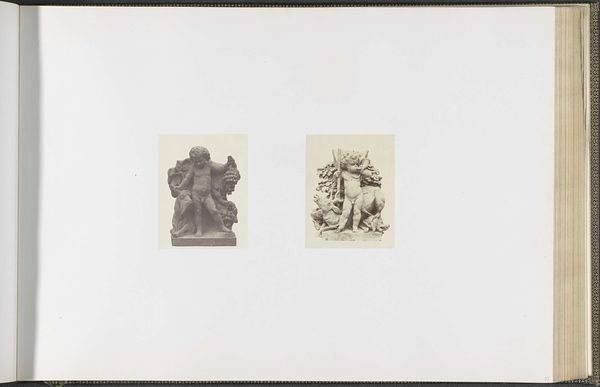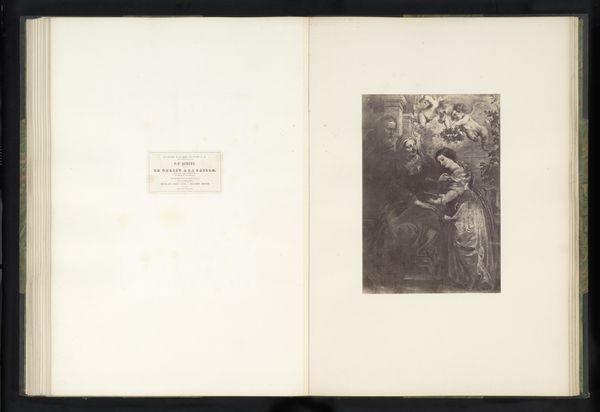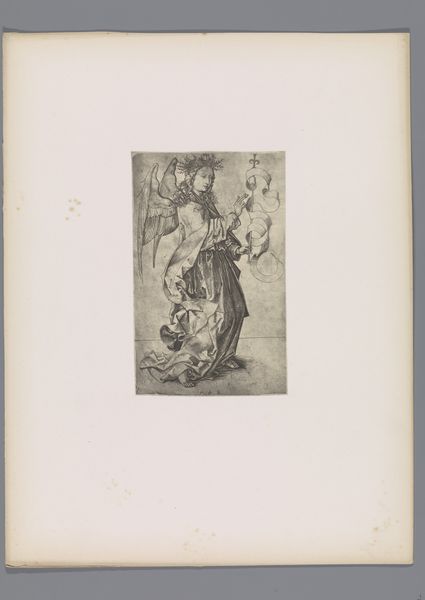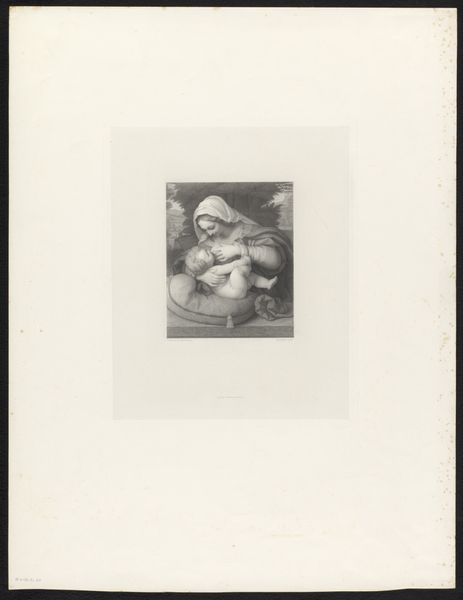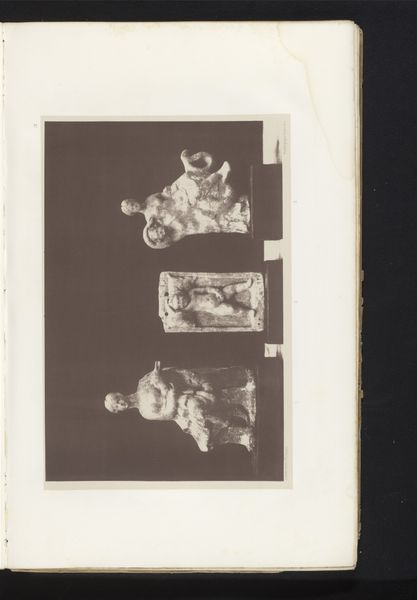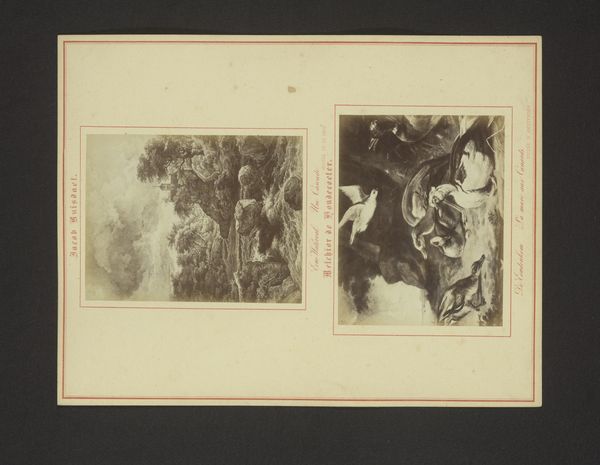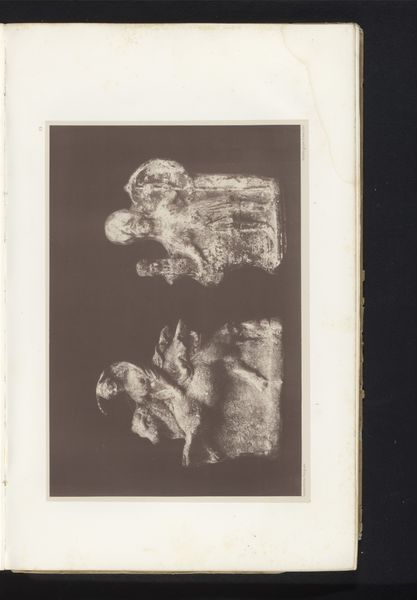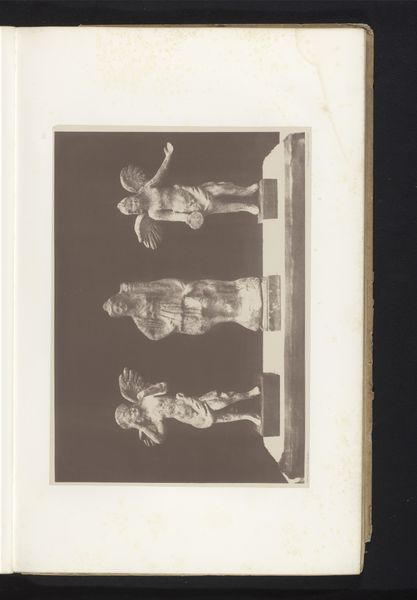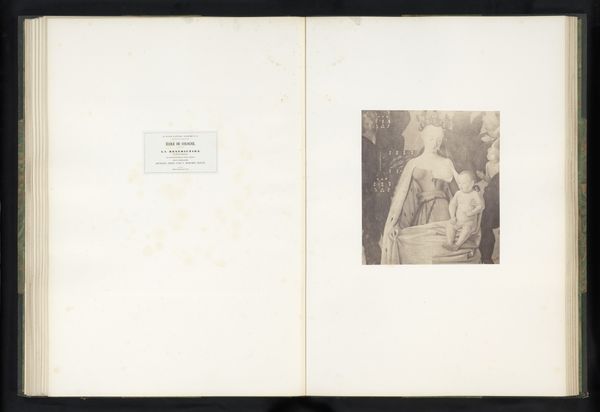
Twee afbeeldingen van sculpturen, waarvan een hoofd van Christus, van de San Marco in Venetië before 1885
0:00
0:00
print, photography, sculpture
#
portrait
#
photo of handprinted image
#
aged paper
#
light pencil work
#
homemade paper
#
pale palette
#
pale colours
# print
#
light coloured
#
white palette
#
photography
#
ancient-mediterranean
#
sculpture
#
folded paper
#
pale shade
Dimensions: height 311 mm, width 395 mm
Copyright: Rijks Museum: Open Domain
Curator: This photographic print, dating from before 1885, presents two images of sculptures originating from San Marco in Venice. One depicts a head of Christ, while the other shows a full figure. My initial impression is one of solemnity, they both feel like ghosts of faith. Editor: They do evoke a certain stillness. It's interesting to consider the socio-political context of creating these images. Were they intended as straightforward documentation or something more? How did these images circulate, and who was the intended audience? Curator: Certainly, understanding the distribution channels is crucial. But also, think about the artistic and religious context in which these sculptures were originally created. What did it mean to represent Christ in this way? What ideologies are being perpetuated in this representation? Editor: Good point. Considering how religious imagery was deployed as a tool of power is central to understanding how public opinion was managed through images such as these. I'd also be curious to know if the sculptures are still at San Marco or if their removal or redisplay played any role in the photograph's production. Curator: I am curious about the choices in selecting these particular sculptures to document and whether there was an attempt to elevate them for a specific political agenda or religious argument. Whose narrative were they trying to promote? Editor: Looking at the photographic technique itself—the tonal range, the lighting—we can ask whether the photographer aimed for objectivity or used specific methods to influence the viewer's perception. Curator: I see it as a visual intervention reflecting biases toward European aesthetics of beauty, worth examining critically when documenting historical religious iconography. I feel the composition presents subtle yet deeply embedded statements about power, faith, and cultural preservation. Editor: Indeed. Thinking through the choices—both of subject matter and technique—really enriches our understanding of this work. Curator: Absolutely, viewing it through an intersectional lens provides so much additional insight. Thank you. Editor: And you’ve added another layer by emphasizing their cultural significance.
Comments
No comments
Be the first to comment and join the conversation on the ultimate creative platform.
